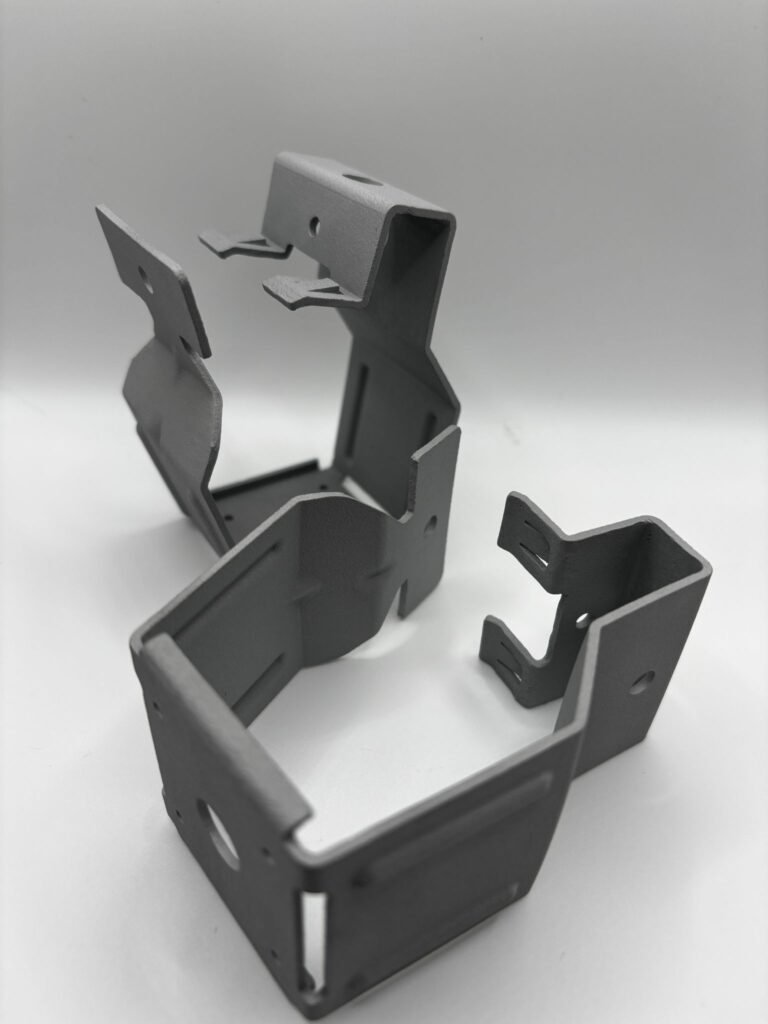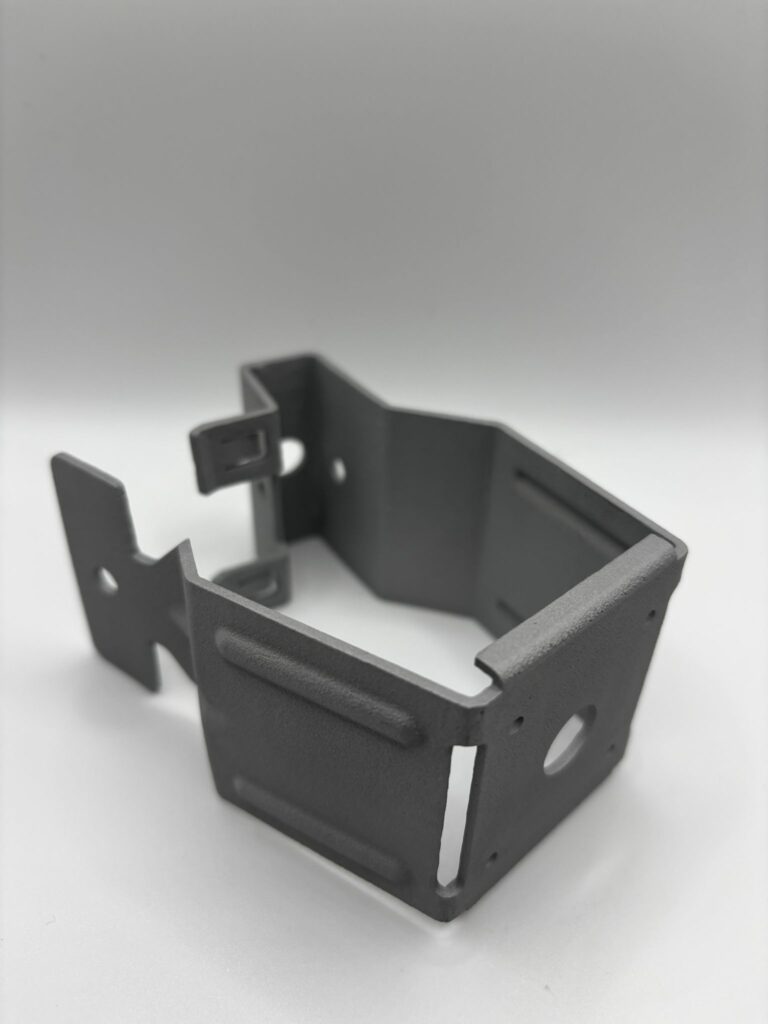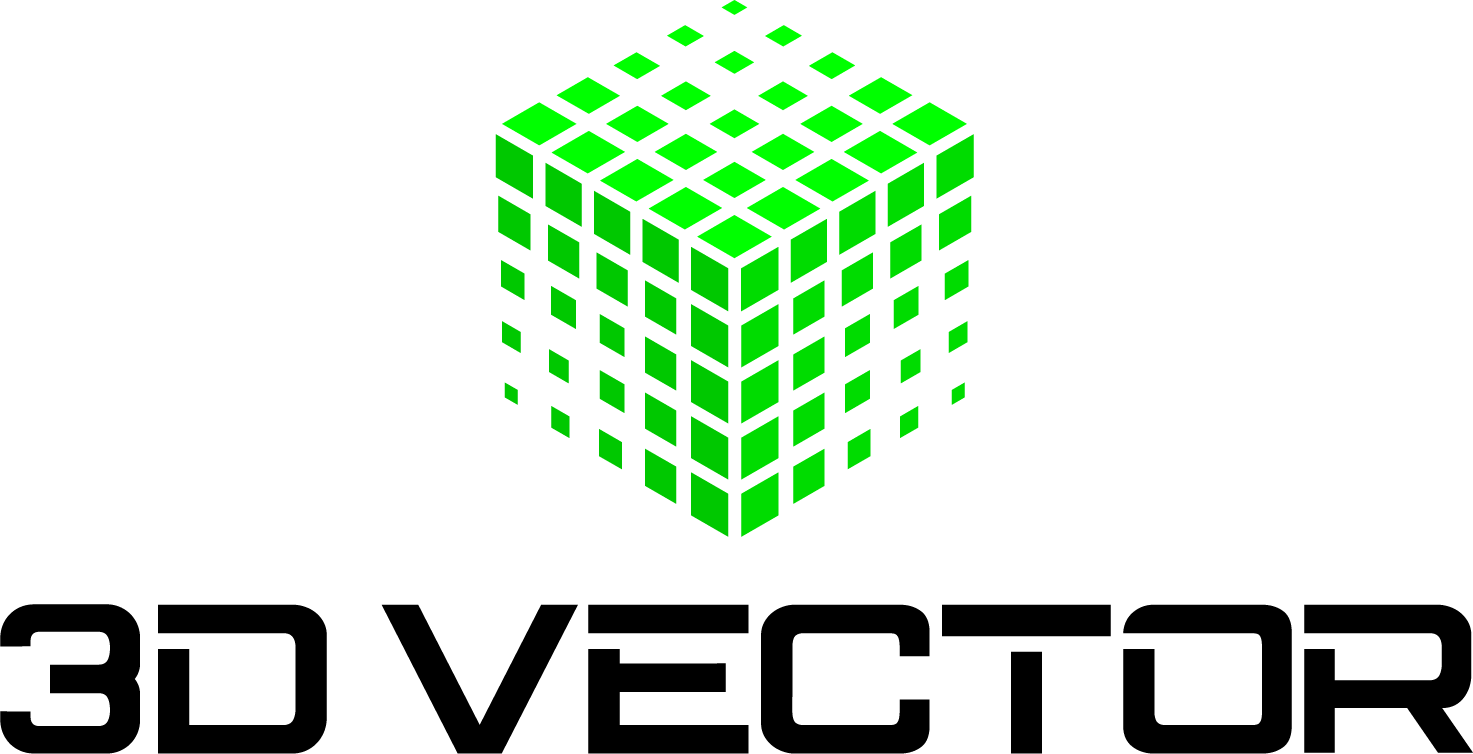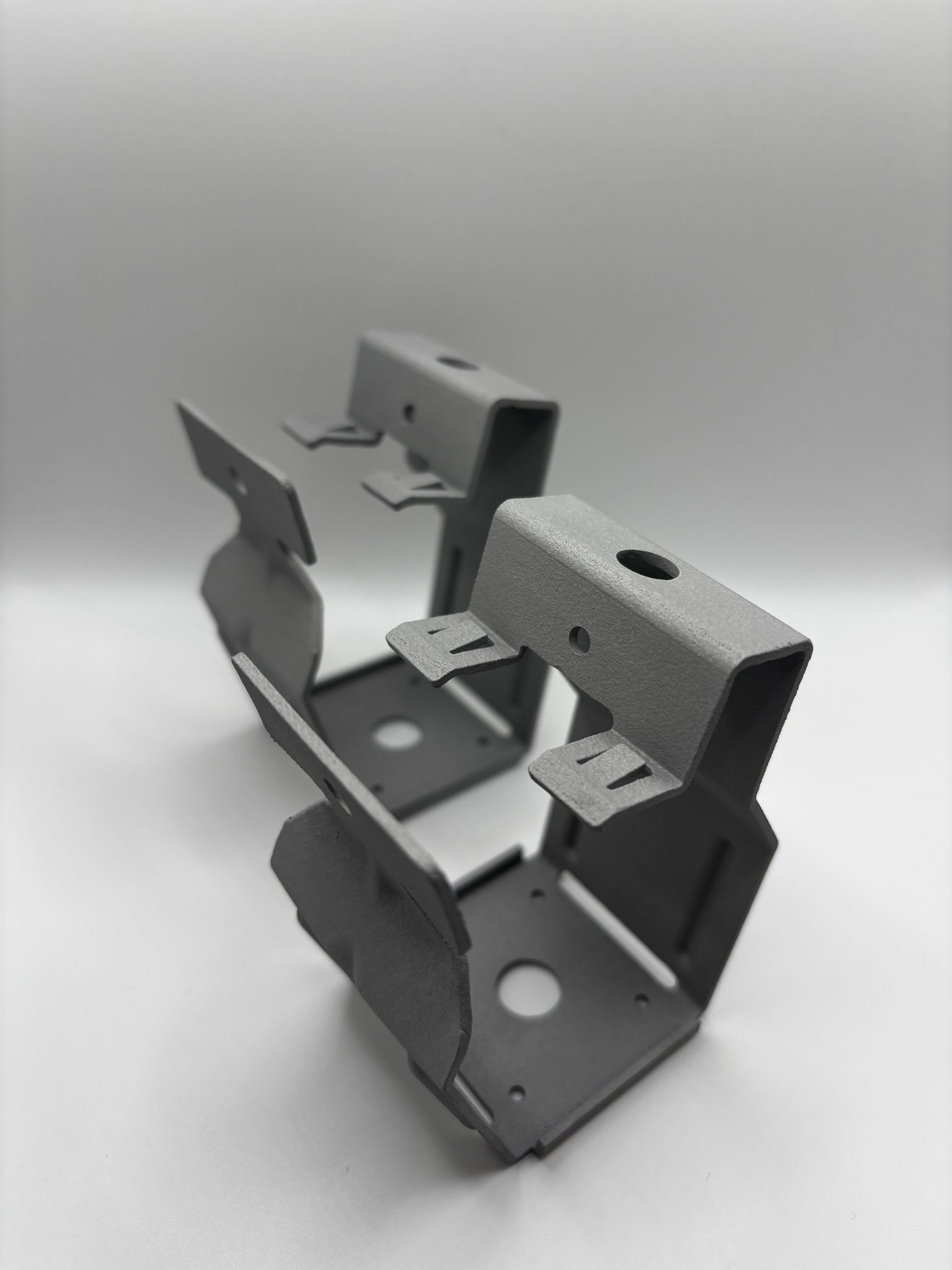At 3D Vectors, innovation isn’t just a buzzword—it’s the foundation of everything we do. Our recent collaboration with an industrial client led to the production of highly specialized 3D printed aluminum brackets that perfectly balance strength, weight, and functionality. Using advanced 3D aluminum printing techniques—specifically Direct Metal Laser Sintering (DMLS)—we brought their complex design to life with precision and speed that traditional manufacturing simply couldn’t match.
In this blog post, we’ll walk you through how we approached the project, the benefits of aluminum 3D printing, and why DMLS is transforming the way industries think about metal component fabrication.
The Project Brief: Custom Brackets With Demanding Requirements
Our client, an engineering solutions provider, needed a set of custom brackets for a mechanical assembly used in a high-stress environment. These parts had to meet several key requirements:
- High strength-to-weight ratio
- Dimensional accuracy
- Corrosion resistance
- Compatibility with standard fasteners
- Minimal post-processing needs
They approached us with a 3D CAD model that featured complex internal geometries, tight tolerances, and overhangs that would have been extremely challenging—if not impossible—to machine using traditional methods like CNC milling or die-casting.
That’s where 3D printed aluminum parts come into play.
Why Aluminum? And Why 3D Printing?
Aluminum is widely used in engineering applications due to its favorable mechanical properties. It is lightweight yet strong, resistant to corrosion, and an excellent conductor of heat and electricity. These properties make aluminum ideal for components like brackets, housings, frames, and heat exchangers.
But why 3D aluminum printing?
Traditional aluminum fabrication methods are not always flexible or cost-effective for custom or low-volume parts. Machining aluminum can be wasteful due to material removal, and tooling for casting is expensive and time-consuming to set up.
On the other hand, metal 3D printing offers several unique advantages:
- Design freedom – Internal channels, lattice structures, and intricate mounting features can be printed without added complexity.
- Rapid prototyping to production – No need for tooling or mold creation.
- On-demand manufacturing – Eliminate inventory by producing parts only when needed.
- Lightweight – Optimize geometry to reduce material usage while maintaining strength.
These benefits made 3D printing the obvious choice for this application.
The Technology Behind the Build: DMLS (Direct Metal Laser Sintering)
For this project, we used DMLS—a leading-edge additive manufacturing process for metals.

How does DMLS work?
DMLS begins with a fine layer of aluminum alloy powder (commonly AlSi10Mg) spread across the build platform. A high-powered laser then selectively sinters the powder according to the CAD design, fusing particles layer by layer to form a solid object. Once one layer is complete, the platform lowers and another layer of powder is spread, repeating the process until the full part is built.
Key advantages of DMLS for aluminum parts include:
- Excellent material density – DMLS parts often reach >99% density, comparable to wrought materials.
- Minimal support requirements – Complex geometries are printed with internal supports that are easily removed.
- Superior surface finish – Ideal for parts requiring tight tolerances and minimal post-processing.
- Isotropic properties – Parts exhibit consistent strength in all directions.
By leveraging DMLS, our team was able to deliver highly accurate and mechanically robust 3D printed aluminum parts in a matter of days.
Design Considerations for Aluminum 3D Printing
Designing for 3D aluminum printing isn’t the same as designing for subtractive manufacturing. At 3D Vectors, we worked closely with the client’s engineering team to optimize the part geometry for additive success.
Here are a few considerations we took into account:
- Wall Thickness and Overhangs: We ensured minimum wall thicknesses of 1 mm for structural integrity and reduced unsupported overhangs to avoid warping during printing.
- Support Structures: Support structures were automatically generated in areas with overhangs greater than 45°, then manually reviewed for accessibility and ease of removal after printing.
- Thermal Stress Management: Since DMLS builds at high temperatures, we adjusted the orientation of the brackets to minimize residual stress and avoid deformation.
- Mounting Hole Precision: Critical features like mounting holes and alignment slots were built slightly undersized to allow for post-print reaming or tapping to achieve the final tolerance.
The Results: Strong, Lightweight, and Ready for Action
The final 3D printed aluminum brackets exceeded the client’s expectations. Not only did they meet all mechanical and dimensional requirements, but they also allowed for:
- Faster assembly
- Reduced the overall weight of the mechanical system
- Enhanced durability
- Streamlined maintenance
We post-processed the parts with extra support removal and light bead blasting to improve the surface texture, followed by anodizing for added corrosion resistance and a sleek industrial finish.

Why Choose 3D Vectors for Your 3D Printed Aluminum Parts?
At 3D Vectors, we specialize in end-to-end metal additive manufacturing, from prototyping to low-volume production. Our expertise in DMLS, combined with deep knowledge of design for additive manufacturing (DfAM), allows us to deliver exceptional results for clients across industries.
When you work with us, you get:
- Expert guidance on materials and design
- Quick turnaround for urgent projects
- Certified processes and material traceability
- Consistent quality control using advanced metrology tools
- Custom finishing options, from powder coating to anodizing
Whether you need lightweight mechanical components, brackets, enclosures, or heat exchangers, we’re your trusted partner for aluminum 3D printing.
Industries That Benefit From 3D Printed Aluminum Brackets
The versatility of aluminum and the flexibility of additive manufacturing make this combination valuable across multiple sectors:
- Aerospace – Lightweight structural components, mounts, and brackets.
- Automotive – Prototypes, suspension parts, and custom mounts.
- Robotics – Lightweight frames and armatures.
- Electronics – Enclosures with integrated cooling channels.
- Medical – Lightweight, sterilizable parts and fixtures.
The Future is Printed
This project is a prime example of how 3D printed aluminum brackets can transform a product’s performance while simplifying the manufacturing process. By embracing DMLS technology, we helped our client move from concept to finished part faster and more efficiently than ever before.
If you’re facing a design challenge where strength, lightness, and complexity matter, it’s time to consider 3D aluminum printing. At 3D Vectors, we’re ready to help you bring your vision to life.
Contact us today to learn more about our 3D printed aluminum parts and how we can support your next project with cutting-edge metal additive manufacturing.


